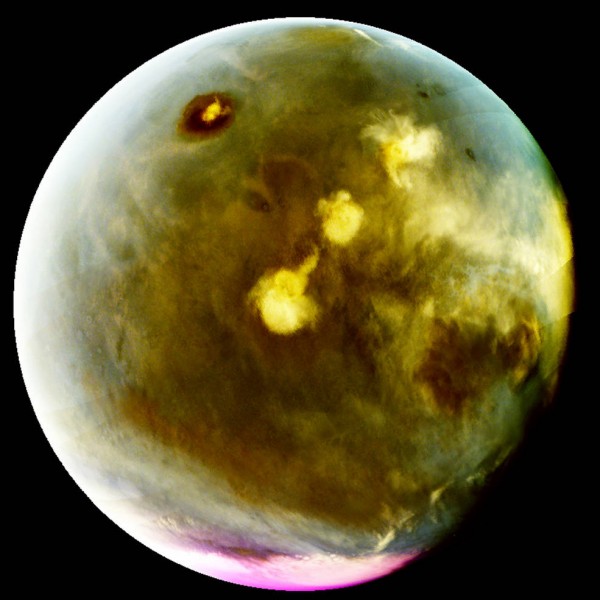By Ana Verayo, | October 18, 2016

MAVEN's Imaging UltraViolet Spectrograph obtained images of rapid cloud formation on Mars on July 9-10, 2016.
Previously unseen parts of Mars have revealed with ultraviolet imagery courtesy of NASA's MAVEN (Mars Atmosphere and Volatile Evolution) spacecraft.
According to lead project scientist, Justin Deighan of the University of Colorado, MAVEN's elliptical orbit is just right to capture a global image. However, the probe is still traveling at fast speeds to obtain multiple views as Mars rotates.
Like Us on Facebook
Using the spacecraft's onboard Imaging Ultraviolet Spectrograph, these new images show false color images depicting the hidden forces behind the atmosphere of Mars. The mosaic shows vast cloud formations and summit of volcanoes that appear to merge.
There are also clouds that appear to cover the volcanic peaks of Mars during daytime which are also similar to cloud tops on mountain ranges found on Earth.
Mars also has seasons and ozone levels shift during these seasonal changes. Water vapor is also detected that apparently freezes out of the tenuous Martian atmosphere.
Apart from this, MAVEN also captured the mysterious forces that occur during nighttime on Mars, which is the side of the alien world that is facing away from the sun. The spacecraft mapped this region showing erratic patterns of high winds in the atmosphere.
This eerie night glow is produced by nitric oxide emissions that provide a luminous glow via an ultraviolet spectrum. When carbon dioxide and nitrogen forms in the atmosphere during the daytime, atoms break down when the sun's ultraviolet light hits the atmosphere and are transferred by winds into the night side of the dusty planet.
When these winds shifts into lower altitudes on Mars' night side, they suck the atoms with them as oxygen and nitrogen particles collide to form nitric oxide, producing glowing emissions when exposed to ultraviolet light.
On the southern polar region of Mars, ultraviolet emissions appear to be glowing during the day time, originating from the ozone in the atmosphere.
Scientists say that this phenomenon has been observed in other planets in the solar system.
-
Use of Coronavirus Pandemic Drones Raises Privacy Concerns: Drones Spread Fear, Local Officials Say

-
Coronavirus Hampers The Delivery Of Lockheed Martin F-35 Stealth Fighters For 2020

-
Instagram Speeds Up Plans to Add Account Memorialization Feature Due to COVID-19 Deaths

-
NASA: Perseverance Plans to Bring 'Mars Rock' to Earth in 2031

-
600 Dead And 3,000 In The Hospital as Iranians Believed Drinking High-Concentrations of Alcohol Can Cure The Coronavirus

-
600 Dead And 3,000 In The Hospital as Iranians Believed Drinking High-Concentrations of Alcohol Can Cure The Coronavirus

-
COVID-19: Doctors, Nurses Use Virtual Reality to Learn New Skills in Treating Coronavirus Patients







